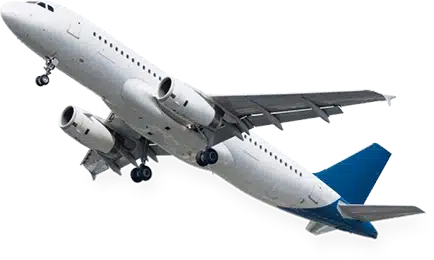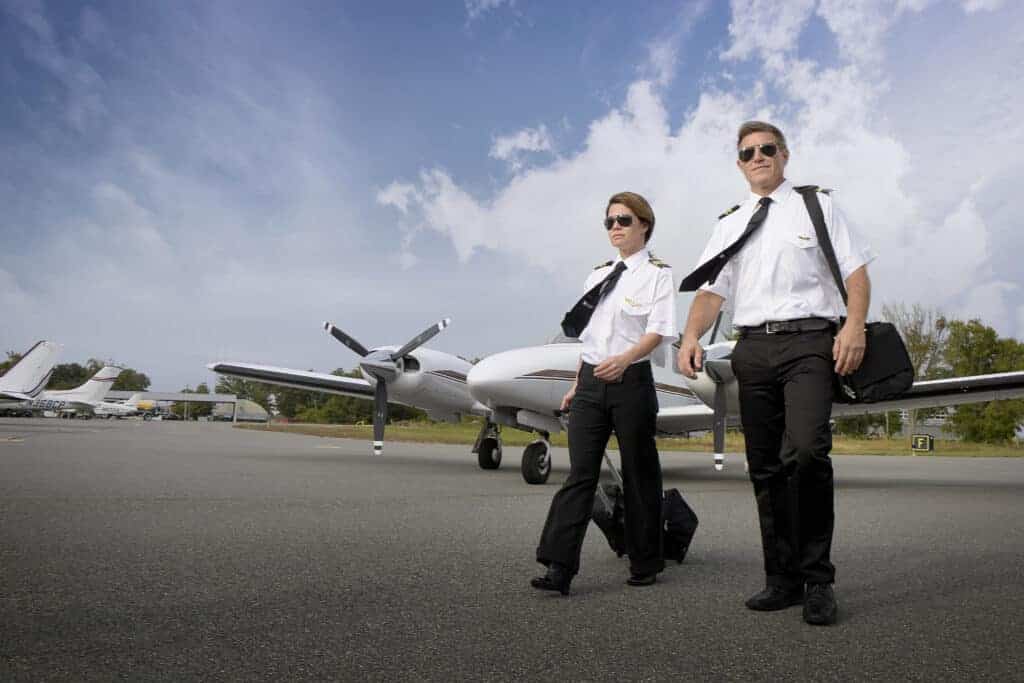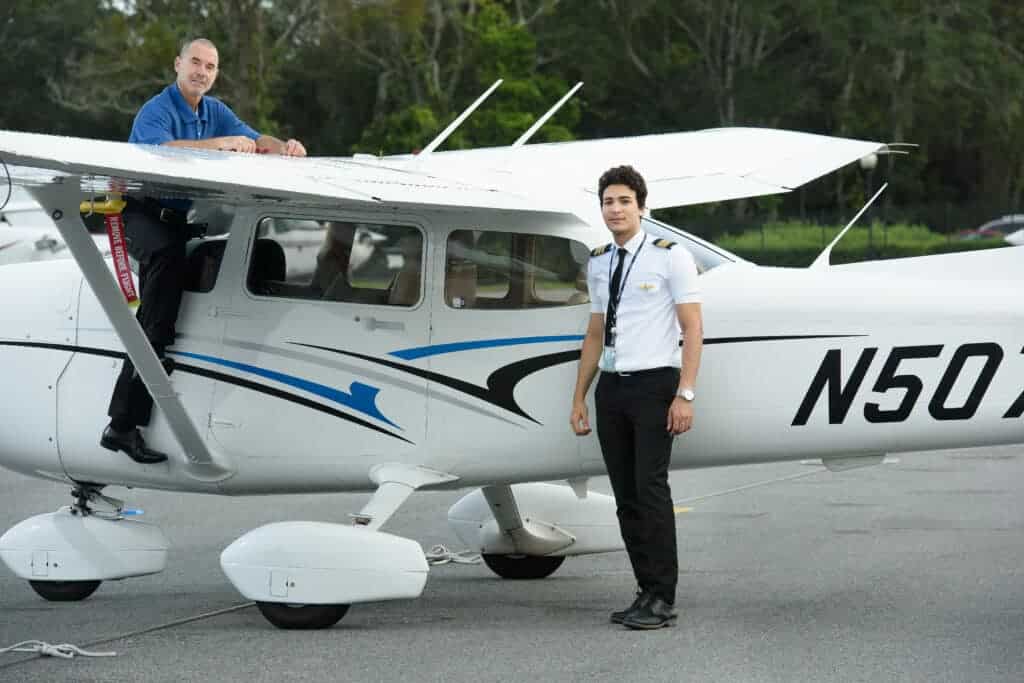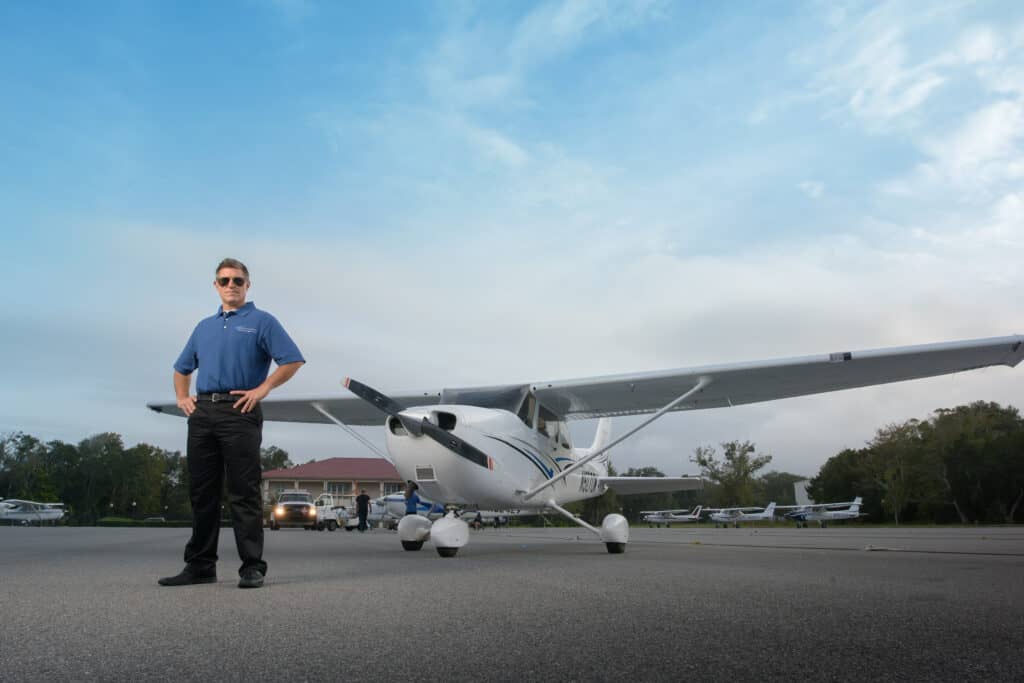Airspace Visibility Requirements: The Ultimate Reasons They Are Mandatory

Introduction to Airspace Visibility Requirements
Imagine soaring through the endless blue skies, surrounded by fluffy clouds and the vastness of the horizon. While it’s a breathtaking experience, flying comes with its own set of challenges – one of which is maintaining clear visibility. That’s where Airspace Visibility Requirements come into play. These guidelines aren’t just a bunch of boring rules; they’re carefully crafted to keep pilots, passengers, and everyone involved in air travel safe and sound.
Every time you step onto a plane, you’re putting your trust in these requirements. They help pilots navigate through different weather conditions, ensuring they can spot potential hazards from a safe distance. From misty mornings to stormy nights, these rules make sure that visibility is never compromised. Whether you’re a seasoned traveler or a first-time flyer, you can rest assured that these guidelines are in place to make your journey as smooth as possible.
The Importance of Airspace Visibility Requirements
Being able to see clearly is extremely important for pilots. Poor visibility can easily lead to pilots becoming disoriented, colliding with other aircraft or objects, and finding themselves in very dangerous situations. That’s why there are airspace visibility requirements in place – to keep pilots, passengers, and people on the ground safe. These airspace visibility requirements are especially crucial during the most critical parts of a flight, like takeoff and landing, and navigating through crowded airspaces.
The airspace visibility requirements aren’t just random rules. They were carefully developed based on years of experience and research by aviation experts. The requirements recognize that when visibility is low due to things like fog or clouds, it becomes much harder for pilots to control their aircraft properly, see and avoid obstacles, and respond quickly to unexpected events. By setting minimum visibility levels that must be met, aviation authorities make sure pilots always have enough visual references to operate their aircraft safely, especially in those highest-risk situations.
Additionally, airspace visibility requirements play a key role in managing air traffic smoothly. When visibility drops below the requirements, air traffic controllers can take specific measures like increasing the distance between aircraft or rerouting flights to alternate routes or airports. These steps not only improve safety but also help keep air travel running efficiently, minimizing delays and disruptions that could otherwise spread throughout the entire system.
Airspace Visibility Requirements: Legal Framework and Regulations
Have you ever wondered who decides how much visibility is needed for planes to fly safely? Well, there are strict rules and laws in place, created by international and national aviation organizations. These rules ensure that pilots, air traffic controllers, and everyone involved in aviation follows the same visibility requirements to keep us all safe in the skies.
The main organization setting these rules is the International Civil Aviation Organization (ICAO). They work with national authorities like the Federal Aviation Administration (FAA) in the United States and the European Union Aviation Safety Agency (EASA) in Europe to establish minimum visibility levels for different phases of flight, types of aircraft, and operating environments. For example, the visibility needed for a small plane taking off might be different from a large commercial jet landing at a busy airport.
Following these visibility regulations isn’t optional – it’s mandatory for all pilots, air traffic controllers, and anyone working in aviation. Complying with the rules is crucial for maintaining the highest safety standards. Whether it’s a small private plane or a major airline, they all have to meet the same visibility requirements before taking to the skies. This ensures that no matter where you’re flying, your safety is the top priority.
How Airspace Visibility Requirements Ensure Safety
Airspace visibility requirements are meticulously designed to address and mitigate a multitude of potential risks and hazards associated with poor visibility conditions. These requirements serve as a crucial safeguard, helping to prevent and minimize the following risks:
Collision Avoidance: Maintaining adequate visibility is paramount for enabling pilots to visually acquire and maintain safe separation from other aircraft, terrain features, and obstacles. This significantly reduces the risk of catastrophic mid-air collisions and controlled flight into terrain (CFIT) incidents, which can result in devastating consequences.
Situational Awareness: Clear and unobstructed visibility allows pilots to maintain a comprehensive and up-to-date understanding of their surroundings, including the precise positioning of other aircraft, prevailing weather conditions, and potential hazards or obstructions. This heightened situational awareness enhances pilots’ decision-making abilities, enabling them to respond promptly and appropriately to dynamic situations.
Navigation: Visibility requirements ensure that pilots can accurately navigate their aircraft using visual references, such as prominent landmarks, runway markings, and approach lighting systems. This minimizes the risk of disorientation, navigational errors, and deviations from the intended flight path, which could potentially lead to dangerous situations or incidents.
Emergency Procedures: In the event of an emergency or unexpected situation, adequate visibility is a critical factor in executing safe emergency procedures. Whether it involves executing a forced landing, diverting to an alternate airport, or implementing other contingency measures, clear visibility allows pilots to assess the situation accurately and take appropriate actions to mitigate risks and ensure the safety of all on board.
Air Traffic Management: Visibility requirements play a crucial role in facilitating efficient and safe air traffic management. When visibility conditions deteriorate, air traffic controllers can implement specific procedures, such as increasing separation between aircraft, issuing holding instructions, or rerouting flights to alternate routes or airports. These measures help maintain an orderly and safe flow of air traffic, reducing the likelihood of incidents or conflicts.
By adhering to these visibility requirements, the aviation industry can proactively address and mitigate a wide range of risks, ensuring the highest levels of safety for pilots, passengers, and personnel on the ground.
Different Classes of Airspace and Their Visibility Requirements
Airspace is meticulously divided into various classes, each with specific visibility requirements tailored to factors such as traffic density, operational complexity, and unique characteristics. These airspace classes and their corresponding visibility requirements are as follows:
- Class A Airspace: This is the most strictly controlled and regulated airspace, primarily designated for commercial air traffic operations. Stringent visibility requirements apply in Class A airspace, often mandating a minimum of 8 kilometers (5 miles) of visibility to ensure safe operations within this high-density environment.
- Class B Airspace: Encompassing the airspace surrounding major airports, Class B airspace is subject to stringent visibility requirements to accommodate the high volume of traffic and complex operations. Typical visibility requirements range from 5 to 8 kilometers (3 to 5 miles), with variations based on the specific phase of flight, such as approach, departure, or enroute operations.
- Class C Airspace: This airspace classification is associated with smaller airports and regional air traffic hubs. Visibility requirements in Class C airspace are designed to facilitate safe operations while accounting for the relatively lower traffic density. These requirements typically range from 3 to 8 kilometers (2 to 5 miles), with specific minimums determined by the operational requirements of the airport and surrounding airspace.
- Class D Airspace: Designated for smaller airports and airfields, Class D airspace may have lower visibility requirements compared to other controlled airspaces. Depending on the specific operational environment, visibility requirements as low as 3 kilometers (2 miles) may be permissible for certain operations within this airspace class.
- Class E Airspace: This controlled airspace extends from the surface or a designated altitude up to a specified level, encompassing various operational environments. Visibility requirements in Class E airspace vary based on factors such as the type of operation, proximity to airports or obstructions, and the overall complexity of the airspace.
- Class G Airspace: Class G is designated as uncontrolled airspace, where air traffic control services are not provided. While visibility requirements in this airspace class are generally less stringent than in controlled airspaces, they must still adhere to basic safety standards and regulations established by aviation authorities to ensure the safe operation of aircraft.
It is important to note that these airspace visibility requirements are subject to continuous review and adjustment based on evolving operational needs, technological advancements, and safety considerations. Additionally, specific visibility minimums may vary between different regions or countries, as they are established by the respective national aviation authorities in compliance with international standards and recommended practices.
Airspace Visibility Requirements: The Role of Air Traffic Control
Air traffic control (ATC) serves as a vital component in the effective management of airspace visibility requirements. ATC personnel are entrusted with the critical responsibility of monitoring and reporting real-time visibility conditions, enabling them to provide timely advisories and guidance to pilots operating within their respective airspaces. Their role extends beyond merely disseminating information; they actively coordinate flight operations to ensure compliance with established visibility thresholds.
In situations where visibility conditions deteriorate below prescribed minimums, air traffic controllers are empowered to implement specific procedures and protocols. One such measure is the initiation of instrument flight rules (IFR) operations, which allow for the maintenance of safe separation between aircraft through the use of advanced navigation systems and precise altitude assignments, rather than relying solely on visual cues.
Furthermore, ATC plays a pivotal role in mitigating the potential risks associated with low-visibility scenarios. Through effective communication and coordination with pilots, air traffic controllers can recommend alternative courses of action, such as holding patterns, rerouting, or diversion to alternate airports. These measures not only enhance safety but also contribute to the overall efficiency of the air traffic management system, minimizing disruptions and delays that could otherwise ripple throughout the network.
Airspace Visibility Requirements: Technology and Tools Used for Monitoring Visibility
Ensuring accurate and reliable visibility assessments is essential for maintaining the highest levels of safety in aviation operations. To achieve this, the industry relies on a suite of advanced technologies and sophisticated tools specifically designed to monitor and measure airspace visibility conditions continuously.
At the forefront of these technologies are Runway Visual Range (RVR) systems, which employ specialized sensors to measure the visibility along runways in real-time. This critical data is then promptly relayed to pilots and air traffic controllers, enabling them to make informed decisions regarding takeoff and landing operations under varying visibility conditions.
In addition to RVR systems, Automated Weather Observation Systems (AWOS) play a pivotal role in collecting and disseminating a comprehensive array of meteorological data, including visibility measurements. These systems leverage a network of advanced sensors strategically positioned throughout the airspace, providing pilots and air traffic controllers with up-to-date information on visibility conditions across various locations.
Complementing these dedicated systems are advanced meteorological sensors, such as forward-scatter meters and transmissometers, which employ sophisticated techniques to accurately measure atmospheric visibility. Furthermore, data from satellites and radar systems offer valuable insights into visibility-reducing phenomena, such as fog, low clouds, and precipitation, providing a comprehensive understanding of the overall visibility landscape.
Airspace Visibility Requirements: Training and Certification
Adhering to airspace visibility requirements is a fundamental aspect of aviation safety, and as such, it is a crucial component of pilot training and certification processes. Throughout their comprehensive training, pilots must demonstrate a thorough understanding and practical proficiency in interpreting and complying with visibility requirements during all phases of flight, from pre-flight planning to final approach and landing.
This rigorous training ensures that pilots possess the necessary knowledge and skills to assess visibility conditions accurately, make informed decisions, and take appropriate actions to maintain safe operations. They are trained to interpret various sources of visibility data, including runway visual range systems, meteorological reports, and real-time updates from air traffic control.
In parallel, air traffic controllers undergo specialized training programs that equip them with a comprehensive understanding of visibility regulations and their implications for air traffic management. This training empowers controllers to accurately interpret and communicate visibility information, issue advisories and clearances based on prevailing conditions, and implement specific procedures to maintain safe separation between aircraft in low-visibility scenarios. Through continuous training and certification processes, both pilots and air traffic controllers remain prepared to navigate the challenges posed by varying visibility conditions, ensuring the highest standards of safety are upheld.
Future Trends in Airspace Visibility Management
As the aviation industry continues to embrace technological advancements, new and innovative approaches to enhance visibility management are on the horizon. These cutting-edge developments hold the potential to revolutionize the way airspace visibility is monitored, interpreted, and managed, further bolstering safety and operational efficiency. Some of the potential future trends in this domain include:
- Enhanced Vision Systems (EVS): These advanced systems leverage sophisticated sensors and high-definition displays to provide pilots with a synthetic, augmented view of the external environment, even in challenging low-visibility conditions. EVS technology fuses real-time data from various sources, such as infrared cameras, millimeter-wave radar, and terrain databases, to create a comprehensive and intuitive representation of the surroundings, enabling pilots to maintain situational awareness and make informed decisions.
- Augmented Reality (AR) and Virtual Reality (VR): The integration of AR and VR technologies into cockpit displays holds immense potential for enhancing visibility management. By seamlessly overlaying critical visibility information onto the pilot’s view of the external environment, AR systems can provide real-time, contextual data, such as runway markings, obstructions, and weather patterns, thereby improving situational awareness and decision-making capabilities.
- Automated Decision Support Systems: As the complexity of airspace operations continues to increase, the development of advanced decision support systems could revolutionize the way visibility requirements are interpreted and applied. These intelligent systems, powered by machine learning and artificial intelligence, could assist air traffic controllers and pilots in analyzing vast amounts of data, identifying potential visibility-related risks, and providing tailored recommendations for safe and efficient operations.
- Unmanned Aerial Systems (UAS) Integration: The rapid growth of the unmanned aerial systems (UAS) industry has opened up new frontiers in aviation. As these systems become more prevalent in the airspace, the development of specialized visibility requirements and procedures will be crucial to ensure safe operations alongside manned aircraft. This may involve the implementation of dedicated communication protocols, airspace segregation strategies, and the integration of advanced detect-and-avoid technologies to mitigate the risks associated with reduced visibility conditions.
- Collaborative Decision-Making: The future of airspace visibility management may also involve enhanced collaboration and information-sharing among various stakeholders, including air navigation service providers, airline operators, and aviation authorities. By leveraging advanced data analytics and communication networks, real-time visibility data could be shared seamlessly, enabling a more coordinated and proactive approach to airspace management and ensuring a harmonized response to changing visibility conditions across different regions and airspaces.
As these innovative technologies and strategies continue to evolve, the aviation industry remains steadfast in its commitment to continuously improving visibility management practices, prioritizing safety, and optimizing operational efficiency in an ever-changing and increasingly complex airspace environment.
Conclusion
Airspace visibility requirements are an integral part of the aviation safety framework, ensuring that pilots, air traffic controllers, and other stakeholders can operate with confidence and mitigate the risks associated with poor visibility conditions. These airspace visibility requirements are meticulously designed and continuously evolving to adapt to the changing landscape of aviation technology and operations.
By adhering to these requirements, the aviation industry can maintain the highest standards of safety, protect lives, and facilitate the efficient movement of air traffic worldwide. As the industry continues to grow and innovate, the importance of airspace visibility requirements will only become more paramount, serving as a guiding beacon for safe and secure operations in the skies.
To learn more about airspace visibility requirements and how they impact your aviation operations, consider enrolling in Florida Flyers Flight Academy’s comprehensive training program. Our expert instructors will provide you with in-depth knowledge and practical guidance, ensuring you stay up to date with the latest regulations and best practices.
Contact the Florida Flyers Flight Academy Team today at (904) 209-3510 to learn more about the Private Pilot Ground School Course.



